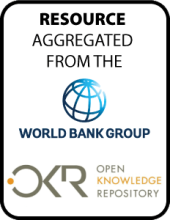Land Library Search
Through our robust search engine, you can search for any item of the over 73,000 highly curated resources in the Land Library.
If you would like to find an overview of what is possible, feel free to peruse the Search Guide.
/ library resources
Showing items 1 through 9 of 115.The livelihoods of indigenous peoples, custodians of the world’s forests since time immemorial, were eroded as colonial powers claimed de jure control over their ancestral lands.
Humanitarian and development organizations working in conflict-affected settings have a particular responsibility to do no harm and contribute to the wellbeing of the population without bias.
This article provides analysis of the issues relating to movement towards new models for Indigenous-led conservation in light of Canada’s initiatives for greater protected areas representation through Target 1.
Indigenous territories are facing increasing pressures from numerous legal and illegal activities that are pushing commodity frontiers within their limits, frequently causing severe environmental degradation and threatening indigenous territorial rights and livelihoods.
/*-->*/
The idea of social inclusion has
garnered considerable attention, especially in the context
of two recent developments: the Sustainable Development
Goals and the heightened attention to inequality. This paper
Latin America and the Caribbean (LCR)
will be center stage in the global development debate as
leaders from around the world convene in Lima, Peru for the
annual meetings of the World Bank Group and International
Land rights and the systems that
administer them can vary significantly across the world and
within countries (World Bank 2003). For a number of reasons,
land rights may be unclear or insecure. Securing land rights
Infrastructure services are significant
determinants of economic development, social welfare, trade,
and public health. As such, they typically feature strongly
in national development plans. While governments may receive






